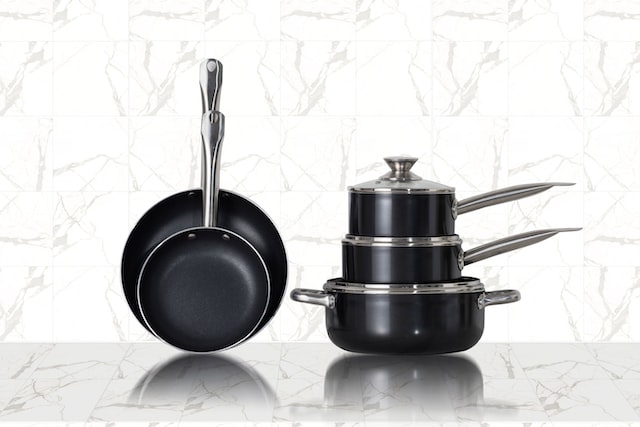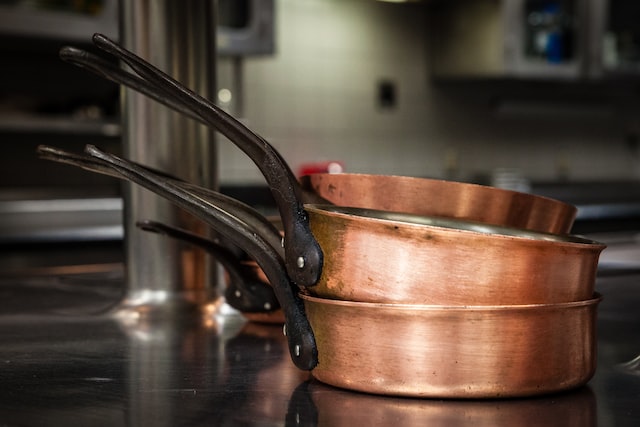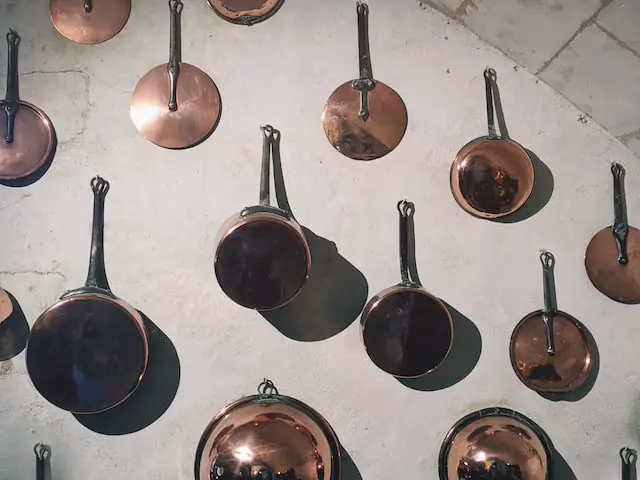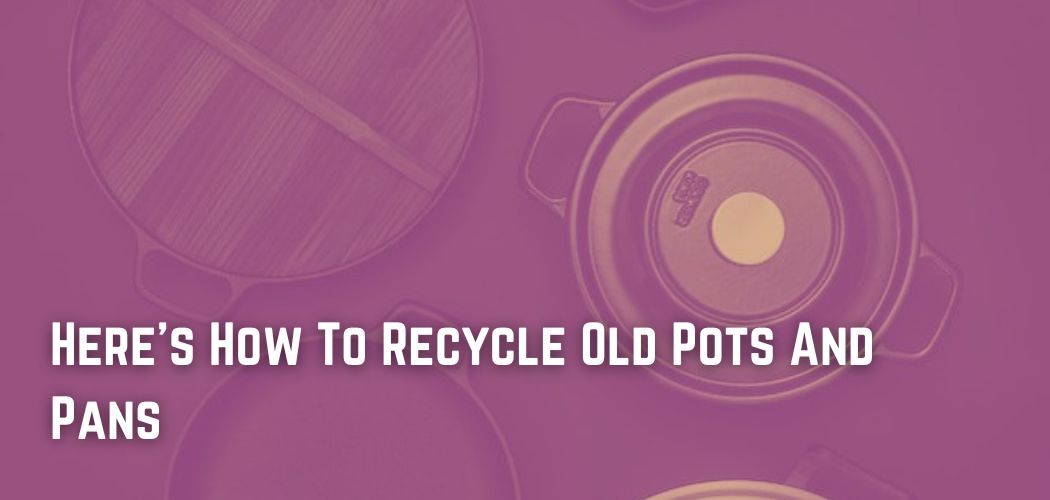Whether you are a professional chef or a home cook, there will come a time when your pots and pans begin to show signs of age.
This is the result of years spent crafting amazing one-pot dinners, soups, and desserts.
But how can you determine when your cookware should be replaced? And what do you do with the retired pieces?
Here are the indicators that suggest it’s time to retire your kitchen pots and pans.
Before you buy new cookware, find out the best way to get rid of your old cookware, such as how to recycle pans.
A senior resource consultant at the Natural Resources Defense Council says that you need to know what is in a piece of cookware before you can recycle it.
The ability to recycle it then depends on where you reside. Our recycling system in the United States is quite localized; everyone should check with their town first.

Each part of the country has different recycling rules based on the materials in each product, not on the product itself.
There are no national standards for recycling pots and pans, but there are laws for recycling the materials they are made of.
Most modern cookware is made of a mix of plastic and metal with special chemical coatings that can’t be recycled. Some cities have extra rules about ferrous metals (those that are magnetic), which can’t be recycled.
Ferrous & Nonferrous Metals
Know if your pan is constructed of ferrous or nonferrous metal, since this will aid you in your search.
Ferrous metals contain iron; nonferrous do not. Your cookware is likely composed of nonferrous metals such as aluminum, copper, and stainless steel.
The easiest way to determine if your pans are ferrous or not is to use a magnet. If a magnet attaches to your cookware, you’re dealing with ferrous metal.
Once you’ve determined what sort of metal your pans are made of, it’s time to locate a recycling center. Many scrap metal dealers will accept them, and some will even compensate you.
Where Can Cookware Be Recycled?
Recycling is an option for pots and pans that have seen better days, but probably not your curbside trash.
Unless your curbside recycling program accepts scrap metal (about 5% of curbside recycling systems in Earth911’s recycling directory fit this description), recycling will need additional work.
For recycling purposes, you will need to determine if the majority of your cookware is made of ferrous or nonferrous metal. Your cookware is most likely composed of nonferrous metals, such as aluminum, copper, or stainless steel.

However, if they attract a magnet, they are ferrous metals. This is significant since certain recyclers will only accept ferrous or nonferrous metals.
If your nonstick cookware is coated with polytetrafluoroethylene (or PTFE, also known as the DuPont brand name Teflon), you have limited recycling choices.
The coating must be removed prior to recycling the pan. Once you’ve located a local scrap metal recycling facility, contact them to see whether they take Teflon-coated pans.
How Can It Be Recycled?
This may not be a question you would typically anticipate being asked, but that does not render it meaningless.
More and more people are getting used to using pots and pans every day, which makes the question more important. So, let’s get to it. What is the actual stance?
Yes, your pots and pans are recyclable. This response may include the required information, but does not explain the reasoning behind it. Hence, let’s take another leap to determine why this is the case.
Have you ever examined your pots and pans closely? You would have observed that they are composed of metallic elements.
Unless otherwise specified, they are composed of steel, aluminum, and copper. This is important so that they can handle the constant heat they are in. And because of this, they are recyclable.

Although pots and pans are recyclable, not all recycling businesses accept them. The reason for this is that recyclers have only recently begun to take an interest in the recycling of metals and associated elements used in pans and pots.
Not all recycling centers are equipped to recycle pans and pots. So, it narrows down to the issue of the capacity for each recycling firm. and whether it has a policy for collecting your metal pots and pans.
Donate Your Old Pans & Pots
Someone may desire your old or broken pots and pans, despite what you may believe.
Utilize the Freecycle Network to locate someone in your area who may be interested in taking things off your hands. Craigslist and Facebook Marketplace are additional outlets for getting rid of outdated kitchenware.
Some individuals are extremely into repairing and reselling cast iron and stainless steel pans, so you may be able to make money off of something you think is trash.
Consider giving your pots and pans in excellent condition to organizations like Goodwill and the Salvation Army.

Notably, if your pan has been coated with a nonstick coating and has been scratched or chipped, it is no longer safe to give away and cannot be restored.
“TerraCycle is an organization that specializes in collecting and reusing items that are difficult to recycle, such as potato chip bags and sandwich bags, which are typically not accepted for recycling at the community level,” she explains.
They are able to embrace numerous things and transform them into something altogether new. They provide a Kitchen Separation Zero Waste Box that is sent to your house and can be filled with nearly any recyclable kitchen item.
Conclusion
Some cookware, such as ceramic bowls and Pyrex baking dishes, contains no metal. These things cannot be placed in your curbside recycling bin.
They can’t be recycled with glass containers, and putting them in your recycling bin will mess up the other things you’re trying to recycle. Nearly all thrift stores, even major chains such as Goodwill, take contributions.





